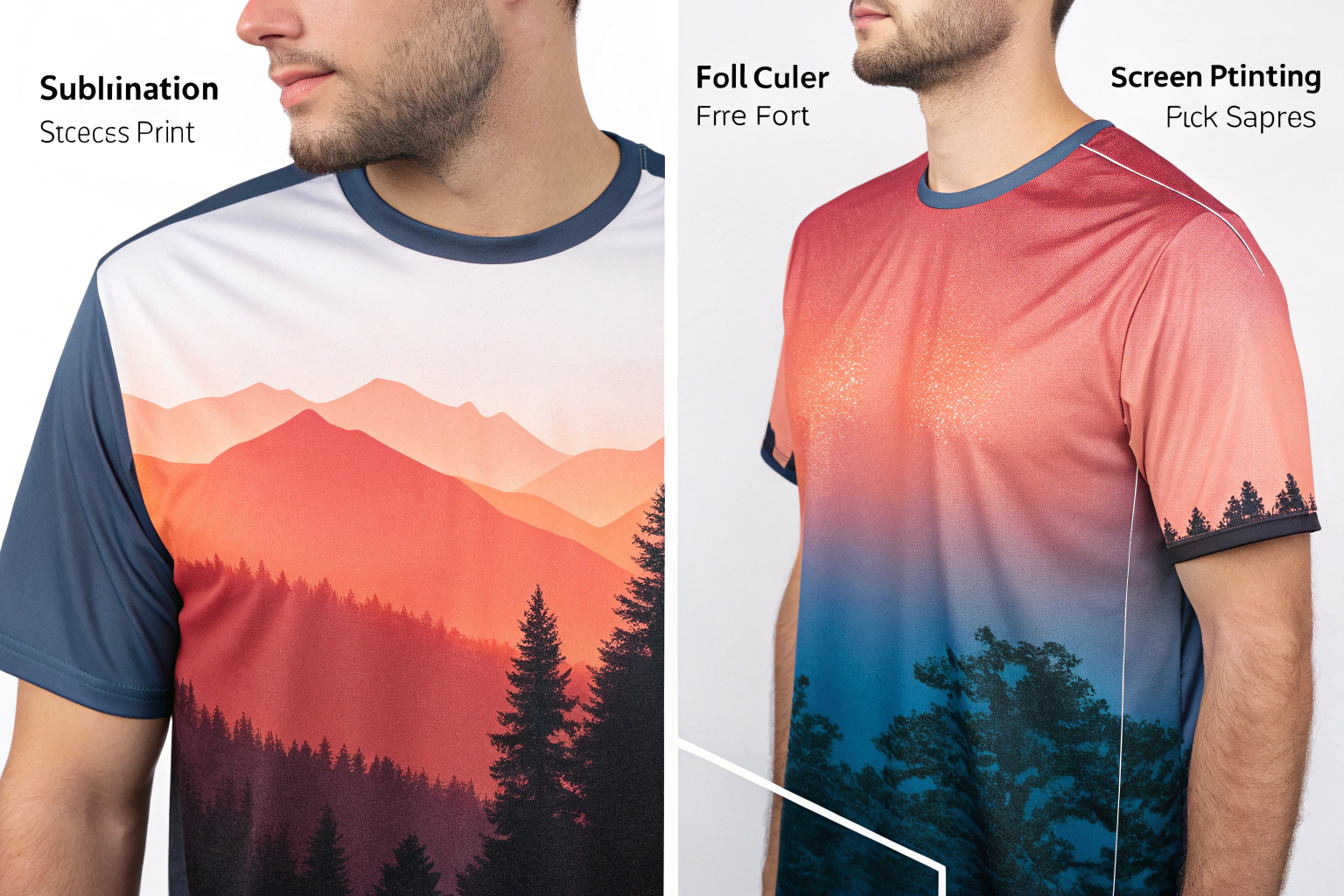Sublimation uses heat to fuse dye into fabric fibers, while screen printing layers ink on top using mesh stencils—each suited to different needs, materials, and outcomes.

Years ago, I ordered a batch of T-shirts with a colorful design. The samples looked great. But after one wash, the screen print cracked. That’s when I started digging into sublimation—and never looked back. Each printing method has its place. The key is knowing when to use which.
What is sublimation printing and how does it work?
Sublimation is a printing method that uses heat to turn dye into gas, bonding it directly with polyester fabric to create vibrant, long-lasting prints.
Sublimation works best on light-colored polyester or poly-coated materials. The design is first printed on special paper, then transferred with a heat press at around 400°F. The dye skips the liquid stage—it goes straight from solid to gas and becomes part of the fabric itself.
That’s why sublimated prints never peel, crack, or fade. It’s perfect for all-over prints, activewear, or sports uniforms where breathability and durability matter.
How does screen printing work on fabric?
Screen printing pushes ink through a mesh stencil onto fabric, layering colors one at a time, creating bold, vivid designs that sit on top of the fabric.
Each color in a design needs its own screen, so multi-color prints require precise alignment and setup. Once the screen is prepared, ink is applied and forced through onto the garment using a squeegee.
This method works on cotton, blends, and synthetics, and gives that textured, tactile feel many people like. It’s great for bold logos, graphic tees, or bulk runs of the same design.
What are the pros and cons of sublimation?
Sublimation offers vibrant, full-color, fade-resistant prints on polyester fabrics but doesn’t work on cotton and has limitations on print placement.
I’ve used sublimation for fitness apparel, yoga tops, and promotional jerseys. The results are stunning—colors pop, and prints last as long as the garment. But you must use polyester. It also doesn’t work well on dark fabrics.
| Feature | Sublimation |
|---|---|
| Fabric Compatibility | Best on 100% polyester |
| Color Range | Unlimited, vibrant, photo-level |
| Durability | No cracking, peeling, or fading |
| Feel | No hand-feel (no ink layer) |
| Limitations | Light fabrics only, no cotton |
For brands focused on detail-rich, all-over designs, sublimation is a win—especially in activewear.
What are the advantages and drawbacks of screen printing?
Screen printing works on many fabrics and gives strong, textured prints, but it’s less ideal for complex, multi-color, or small-batch orders.
We’ve used screen printing for cotton tees and branded merchandise. It’s great for bold designs with fewer colors. But intricate gradients or photos don’t translate well, and setup costs go up with more colors.
| Feature | Screen Printing |
|---|---|
| Fabric Compatibility | Works on cotton, blends, more |
| Color Range | Limited by number of screens |
| Durability | Good with proper curing |
| Feel | Thick ink layer, can crack |
| Limitations | High setup cost for small runs |
It’s ideal for large orders of uniforms, event shirts, or classic brand logos that don’t change often.
When should you choose sublimation over screen printing?
Choose sublimation for photo-level prints, polyester garments, and small runs with complex designs. Use screen printing for bold, limited-color designs on cotton and bulk orders.
I usually guide clients this way:
- Sublimation for activewear, yoga tops, or promotional sportswear.
- Screen printing for branded cotton tees, event shirts, and crew uniforms.
Also think about order size. Sublimation handles one-offs easily. Screen printing gets cheaper the more you print.
Conclusion
Both sublimation and screen printing can make your designs shine—if you choose the right one based on fabric, quantity, and detail level.

